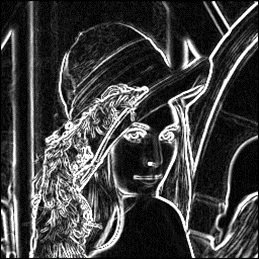Many Computer Vision Lectures (full PDFs) are available below for free!
DESCRIPTION
2D Computer Vision and Image Analysis revolutionize very many domains, notably:
- Medical/Biological/Dental Image Analysis and Diagnosis,
- Autonomous systems perception
- Digital Media (video/image) and Social Media Analytics,
- Big Visual Data Analytics,
- Scientific Image Analysis of any sort, e.g., Remote Sensing, Environment Sensing.
This CVML Web Module focuses on 2D Computer Vision and Image Analysis and their applications in the above-mentioned diverse domains and new challenges ahead.
An in-depth presentation of 2D Computer Vision and Image Analysis clarifies notions and topics in their theory and applications. Edge detection allows reliable object contour extraction. Region segmentation and texture description detail segmentation of an image into homogeneous regions. Either edge or region object descriptions will be employed in 2D object shape description and analysis. Mathematical morphology offers a very powerful and simple approach to shape description and recognition (e.g., skeletons). Finally, computational geometry methods, e.g., distance transforms, Voronoi tessallations and Delaunay triangulation, are valuable tools in image analysis and beyond.

LECTURE LIST
- Introduction to 2D Computer Vision
- Edge Detection
- Region Segmentation
- Image Features
- Image Registration
- Shape Description
- Mathematical Morphology
- Computational Geometry
- Attention and Transformer Networks in Computer Vision
CVML WEB LECTURE MODULE SCHEDULE
This module has been designed to be mastered within 1 month (or less), if you have proper background (at least early undergraduate student in an EE, ECE, CS, CSE or any Engineering or Exact Sciences Department).
We propose that you follow the above mentioned Lecture order. You may want to skip few Lectures that might not be of immediate interest to you for later study.
On average you can study 4 lectures per week. The related effort is as follows:
1) Lecture pdf study and filling the related understanding questionnaire: 1-2 hours per lecture (on average, depending on your background)
2) Tutorial exercise (if available): 1/2 hour on average (more if you do not have theoretical skills). We strongly recommend to try solve them yourself, before resorting to the existing solution.
3) Programming exercise (if available): 3-4 hours on average (more if you do not have good programming skills). We strongly recommend to try program them yourself, before resorting to the existing code.
The following lectures are accompanied by programming or tutorial exercises:
- Edge Detection (3 Tutorial and 2 Programming Exercises)
- Region Segmentation (1 Programming Exercise)
- Image Registration (2 Programming Exercises)
- Computational Geometry (1 Programming Exercise)
